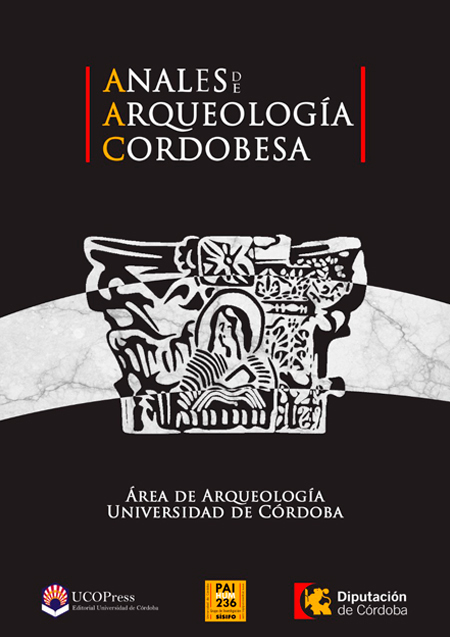An approach to the archaeological landscape of the industrialization in the Upper Guadiato Valley, Cordobesian Sierra Morena
DOI:
https://doi.org/10.21071/aac.v0i0.6444Keywords:
Production landscape, coal mining, territory, infraestructures, cliodiversity.Abstract
The development of the industrialization process in Spain has in Andalusian region a clear evidence of the diversity and pioneering nature that characterized much of the beginning of the contemporary economic and social level. In the Guadiato coalfield, with its central nuclei in Peñarroya-Pueblonuevo, appeared this industrialization process by the existence of a large metallurgical and mineral resources. This resources enabled the laying of infrastructure networks of vertical extraction, the advent and development of railroad, the emergence of industries that experienced a great evolution in relation to manufacturing space thy used, and the birth of a new city (Pueblonuevo) and other ones reactivated in this economic context (Belmez, FuenteObejuna). Addresing this study, following the achievements of the legal protection of andalusian industrial heritage, and the introduction of new, integrate nature paradigms, involves promoting new approaches in industrial archeology in order to preserve assets and integrate them into our social and economic dynamics in a sustainable and profitable way.Downloads
Download data is not yet available.
Downloads
Published
2013-12-01
How to Cite
PRADOS ROSALES, L. M. (2013). An approach to the archaeological landscape of the industrialization in the Upper Guadiato Valley, Cordobesian Sierra Morena. Anales De Arquelogía Cordobesa, 337–362. https://doi.org/10.21071/aac.v0i0.6444
Issue
Section
ARTICLES
License
Aquellos autores/as que tengan publicaciones con esta revista, aceptan los términos siguientes:- Los autores/as conservarán sus derechos de autor y garantizarán a la revista el derecho de primera publicación de su obra, el cuál estará simultáneamente sujeto a la Licencia de reconocimiento de Creative Commons que permite a terceros compartir la obra siempre que se indique su autor y su primera publicación esta revista.
- Los autores/as podrán adoptar otros acuerdos de licencia no exclusiva de distribución de la versión de la obra publicada (p. ej.: depositarla en un archivo telemático institucional o publicarla en un volumen monográfico) siempre que se indique la publicación inicial en esta revista.
- Se permite y recomienda a los autores/as difundir su obra a través de Internet (p. ej.: en archivos telemáticos institucionales o en su página web) antes y durante el proceso de envío, lo cual puede producir intercambios interesantes y aumentar las citas de la obra publicada. (Véase El efecto del acceso abierto).


